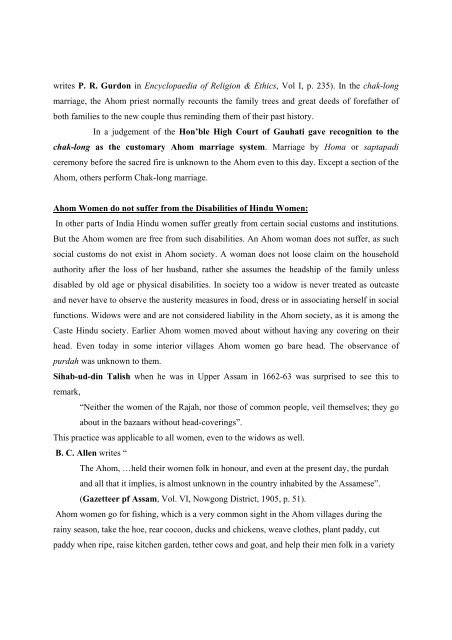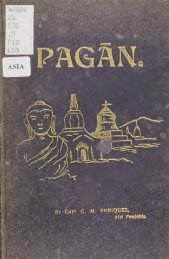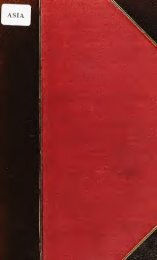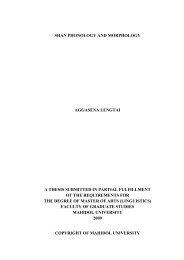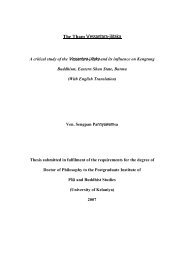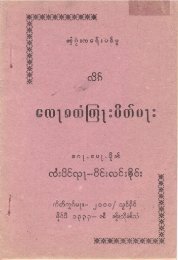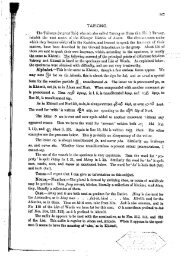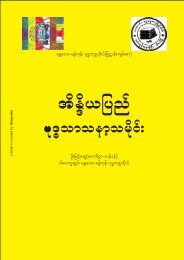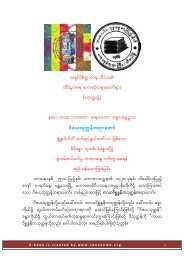The Tai Ahom National Council Memo Scheduling
The Tai Ahom National Council Memo Scheduling
The Tai Ahom National Council Memo Scheduling
Create successful ePaper yourself
Turn your PDF publications into a flip-book with our unique Google optimized e-Paper software.
writes P. R. Gurdon in Encyclopaedia of Religion & Ethics, Vol I, p. 235). In the chak-long<br />
marriage, the <strong>Ahom</strong> priest normally recounts the family trees and great deeds of forefather of<br />
both families to the new couple thus reminding them of their past history.<br />
In a judgement of the Hon’ble High Court of Gauhati gave recognition to the<br />
chak-long as the customary <strong>Ahom</strong> marriage system. Marriage by Homa or saptapadi<br />
ceremony before the sacred fire is unknown to the <strong>Ahom</strong> even to this day. Except a section of the<br />
<strong>Ahom</strong>, others perform Chak-long marriage.<br />
<strong>Ahom</strong> Women do not suffer from the Disabilities of Hindu Women:<br />
In other parts of India Hindu women suffer greatly from certain social customs and institutions.<br />
But the <strong>Ahom</strong> women are free from such disabilities. An <strong>Ahom</strong> woman does not suffer, as such<br />
social customs do not exist in <strong>Ahom</strong> society. A woman does not loose claim on the household<br />
authority after the loss of her husband, rather she assumes the headship of the family unless<br />
disabled by old age or physical disabilities. In society too a widow is never treated as outcaste<br />
and never have to observe the austerity measures in food, dress or in associating herself in social<br />
functions. Widows were and are not considered liability in the <strong>Ahom</strong> society, as it is among the<br />
Caste Hindu society. Earlier <strong>Ahom</strong> women moved about without having any covering on their<br />
head. Even today in some interior villages <strong>Ahom</strong> women go bare head. <strong>The</strong> observance of<br />
purdah was unknown to them.<br />
Sihab-ud-din Talish when he was in Upper Assam in 1662-63 was surprised to see this to<br />
remark,<br />
“Neither the women of the Rajah, nor those of common people, veil themselves; they go<br />
about in the bazaars without head-coverings”.<br />
This practice was applicable to all women, even to the widows as well.<br />
B. C. Allen writes “<br />
<strong>The</strong> <strong>Ahom</strong>, …held their women folk in honour, and even at the present day, the purdah<br />
and all that it implies, is almost unknown in the country inhabited by the Assamese”.<br />
(Gazetteer pf Assam, Vol. VI, Nowgong District, 1905, p. 51).<br />
<strong>Ahom</strong> women go for fishing, which is a very common sight in the <strong>Ahom</strong> villages during the<br />
rainy season, take the hoe, rear cocoon, ducks and chickens, weave clothes, plant paddy, cut<br />
paddy when ripe, raise kitchen garden, tether cows and goat, and help their men folk in a variety


